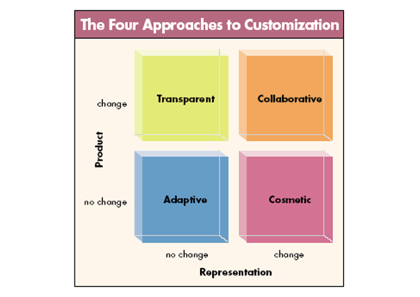It’s easy to think of design in terms of tangible objects, like a smartphone or a chair, or in terms of digital products, like a website or an app.
But what about those experiences we can’t touch or see?
This is where service design comes in. Just like UX, service design is all about creating a first-class experience for the customer — whether they’re buying a coffee, going for a beauty treatment or using public transport.
Let’s take a closer look at what service design is and the processes involved.
What is service design?
The main difference between service design and product design is that services are intangible. Essentially, a service designer tries to make a company’s services better than its competitors by following a service design methodology. The aim is to improve how the service works in order to improve the customer experience.
Take your favourite coffee shop.
There are probably other coffee shops you could go to, so what makes you choose this one? Perhaps you enjoy the friendly service, the smiley face on the receipt, the fact that they use fair trade coffee beans, or the plugs they have to power your phone. It might just be something small, like you never have cash on you and one doesn’t take your card.
Well, that’s service design in a nutshell!
Wikipedia explains it like this: Service design is the activity of planning and organizing people, infrastructure, communication and material components of a service in order to improve its quality and the interaction between the service provider and its customers. Service design may function as a way to inform changes to an existing service or create a new service entirely.
Service design: Consistent vs. unique experiences
Companies like Starbucks and McDonald’s go to great lengths to make sure you experience the same service from San Francisco to Saint Petersburg.
Fast forward and times change. Today’s customers are looking for unique experiences, which throws up a whole host of opportunities and challenges. The hotel industry has definitely felt the impact of Airbnb, and traditional hotels are now striving to create unique experiences or unique rooms to win back their customers.
Of course, companies still face the ultimate challenge (and cost!) of delivering a unique experience on a mass scale.
The four approaches to customization

Source: Harvard Business Review
Apple is a great example of outstanding service design.
Have a problem with your iPhone? Just go to the genius bar and they will help you fix it and get it back up and running for you.
It’s personal, builds the brand and generates loyalty. As a customer, knowing that if anything goes wrong you can quickly get it solved is a huge benefit.
The service design process is similar to UX!
Designers seek to understand the needs and desires of the people who will use a product or service by spending time with them. This approach ensures solutions are both fit for purpose and desirable to the people who will use them. By focusing on human stories and insights, designers build empathy for users, and ensure that the ideas they develop are wholly relevant.
Here is an overview of a typical service design methodology:
- Framing: Get your objectives and outcomes for the project and determine how you will measure your success. Use this template from Service Design Toolkit.
- User insights: From surveys and interviews to user shadowing, you need to get some qualitative data from people. A key aspect of this is asking unbiased questions that get to the bottom of your service design challenge.
- Personas: The persona you build is made up from the research of user insights and data from any customer information you have. It can help you to recognise that various individuals have different demands, behaviours and assumptions, and it can also help you to identify with the individual you’re designing for.Remember:Creating a business for everyone, creates a business for no one!Your persona helps you to come up with ideas and set up experiences to appeal to a specific target group. Check out this guide.
- Ideation: Using the information that came up in the research phase: what ideas/hypotheses have emerged that are worth exploring further? Working in a group and spending time on this section pays off. Having thinking time is underrated in today’s world. Another common failure is to study the competition. Don’t study the competition, study the winners in other industries and draw ideas from a wide range of sources
- Service blueprint: The service plan is a strategy originally used for service design and advancement, but has additionally found applications in identifying problems with operational effectiveness. The method was first described by G. Lynn Shostack, a bank exec, in the Harvard Business Review in 1984. A service blueprint is different from a customer journey map. A blueprint works on the business back-end on how a service works, how it will be delivered, and where it fits into the customer experience.
- Prototype and test: Validate with prototyping, and be aware of biases that might be introduced into this part of the project. Different factors affect the prototypes: people (not limited to the customer, including yourself, the business owner, and staff), location, and timing. Have a list of what to observe and what is important to gather in the testing. The main priority is getting out there and trying things out.
Service design examples
Let’s bring to life the service design which is all around us with some real-world examples.
Organ donation
If you live in an ‘opt-in’ country, then people have to take the time to actively register to donate their organs. The ‘opt-in rate’ is always a struggle for countries to meet and requires heavy marketing and an army of volunteers to remind people. The intent from people is that it’s “something they’ll get around to doing” — but we all know the outcome of that.
Social psychologists Shai Davidai, Tom Gilovich, and Lee Ross set out to understand the psychology behind these different organ donation rates.
In Austria, your organs are donated unless you ‘opt-out’. 90% of the population are registered organ donors.
The average for an opt-in country is 15%. That’s a huge difference!
Davidai, Gilovich and Ross found that people who were already opted in found it to be an ethically trivial and inconsequential action.
In this example, service design and the operations behind it have a huge impact on organ donations — ultimately saving lives.
Airbnb
This example has become a Design 101 case study around the world. Airbnb uses a platform to create a unique customer experience that previously wasn’t so widely available. People wanted to feel free in an apartment and have a unique experience without feeling held hostage in a hotel room.
They started by storyboarding 45 different realistic emotional moments for Airbnb hosts.
They studied the consumer journeys to understand their feelings and pain points.

According to Airbnb’s Head of Global Hospitality and Strategy, Chip Conley, the experience of staying in an Airbnb is the core of its customer strategy, and they work towards creating the experiences that would match with a customer’s desires.
To further this, they released Airbnb Plus which features homes vetted by Airbnb staff around the world to build further trust.
As you can see, service design and UX design have much in common. To learn more about design thinking and creating user-centric experiences, try our free 7-day UX design short course. And if you want to learn more about design in general, here are a few guide you’ll find helpful:
